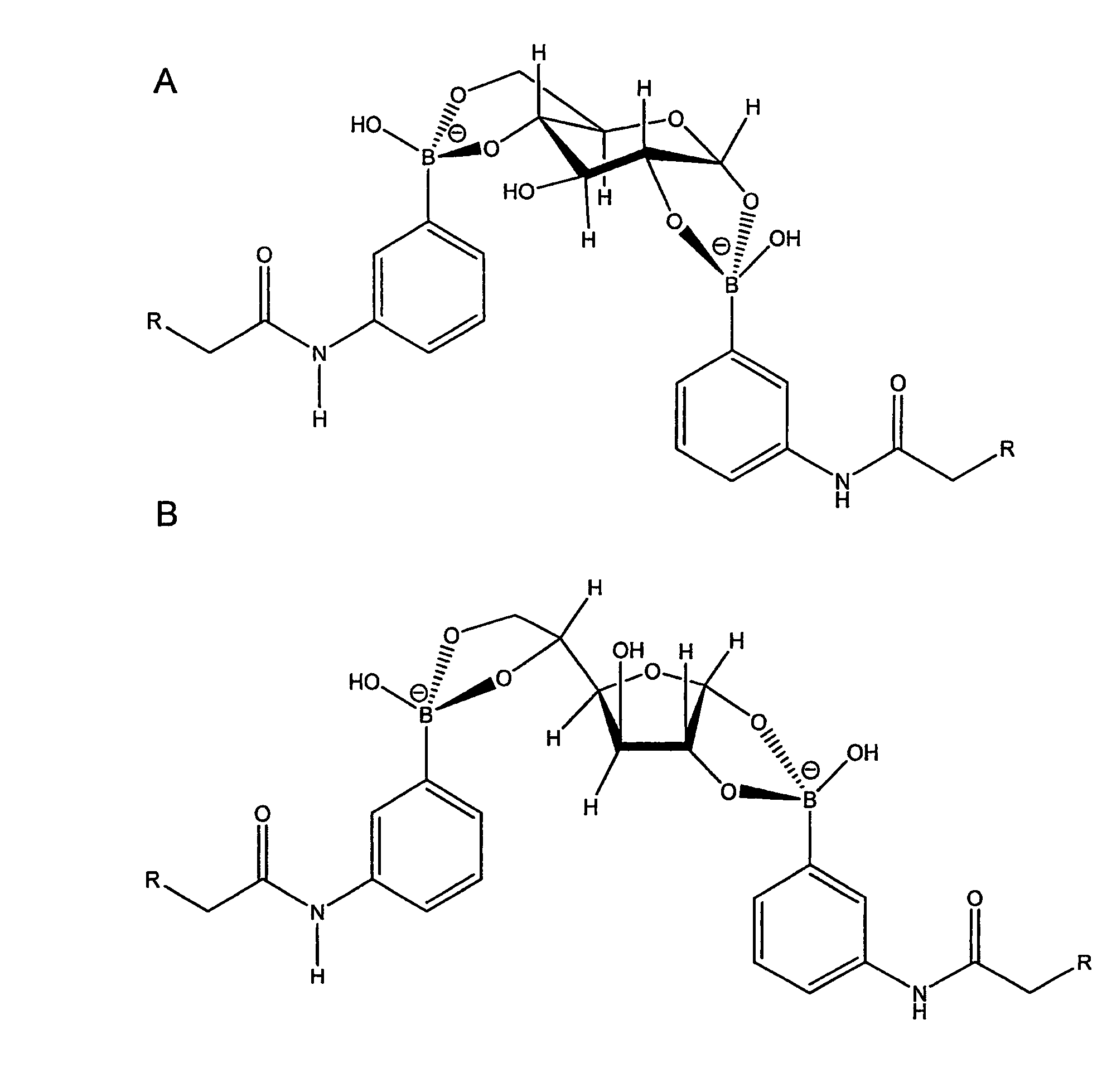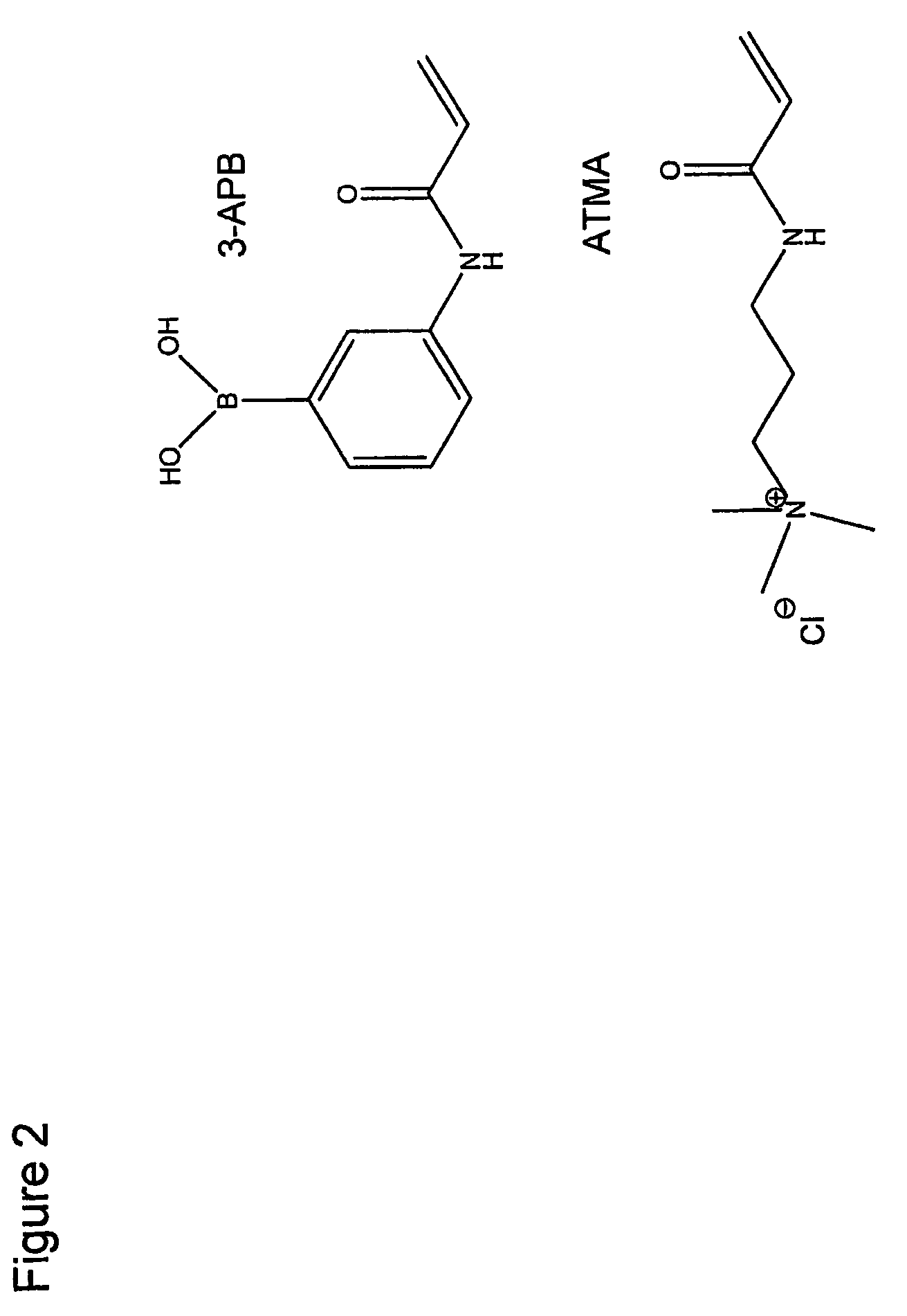Boronate complex and its use in a glucose sensor
a boronate complex and glucose sensor technology, applied in the field of new products, can solve the problems of high cost, risk of missing important glucose levels, and inability to meet the needs of invasive blood glucose monitoring using glucose oxidase, and achieve the effect of greater glucose selectivity
- Summary
- Abstract
- Description
- Claims
- Application Information
AI Technical Summary
Benefits of technology
Problems solved by technology
Method used
Image
Examples
Embodiment Construction
[0032]The invention is applicable to a variety of forms of sensor, and for qualitative or quantitative determination of glucose. The sensor may be in any suitable form, e.g. a contact lens or other optical implant. Thus, the invention may be embodied by, for example, a quartz crystal microbalance-based sensor, a surface plasmon resonance-based sensor, a total internal reflection-based sensor or, preferably (and described below for illustration), a holographic sensor.
[0033]The hologram itself may be made from materials known to those skilled in the art. Similarly, boronic acids are known. Reference may be made to the various documents referred to herein, including the WO publications.
[0034]The cationic species that may be used should be capable of immobilisation within the polymer or other medium. Phosphonium ions and preferably, quaternary amines are suitable for this purpose.
[0035]There are various embodiments of the invention. One is a contact lens (see WO2005 / 031442). Others are ...
PUM
| Property | Measurement | Unit |
|---|---|---|
| pH | aaaaa | aaaaa |
| temperature | aaaaa | aaaaa |
| diameter | aaaaa | aaaaa |
Abstract
Description
Claims
Application Information
 Login to View More
Login to View More - R&D
- Intellectual Property
- Life Sciences
- Materials
- Tech Scout
- Unparalleled Data Quality
- Higher Quality Content
- 60% Fewer Hallucinations
Browse by: Latest US Patents, China's latest patents, Technical Efficacy Thesaurus, Application Domain, Technology Topic, Popular Technical Reports.
© 2025 PatSnap. All rights reserved.Legal|Privacy policy|Modern Slavery Act Transparency Statement|Sitemap|About US| Contact US: help@patsnap.com



